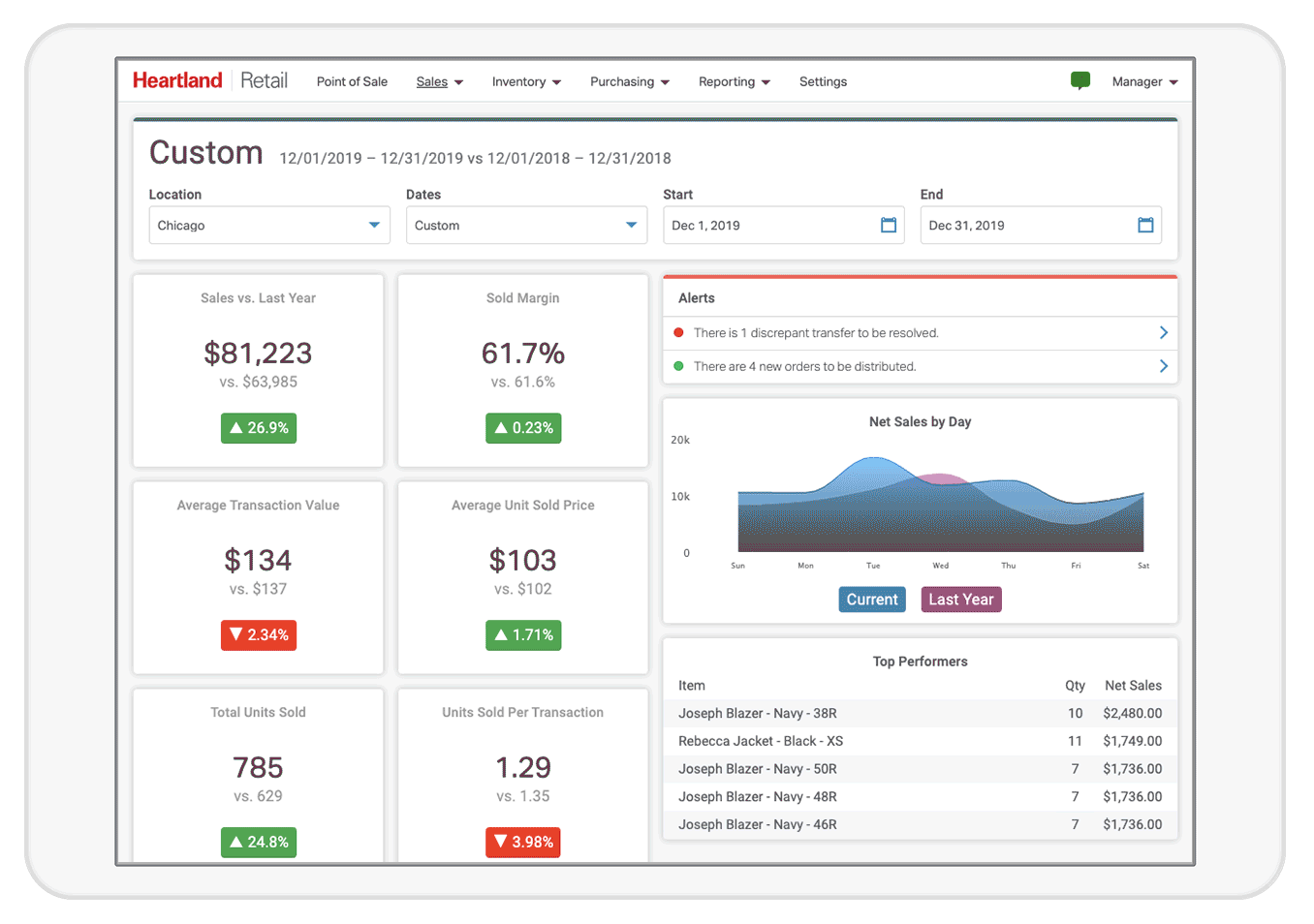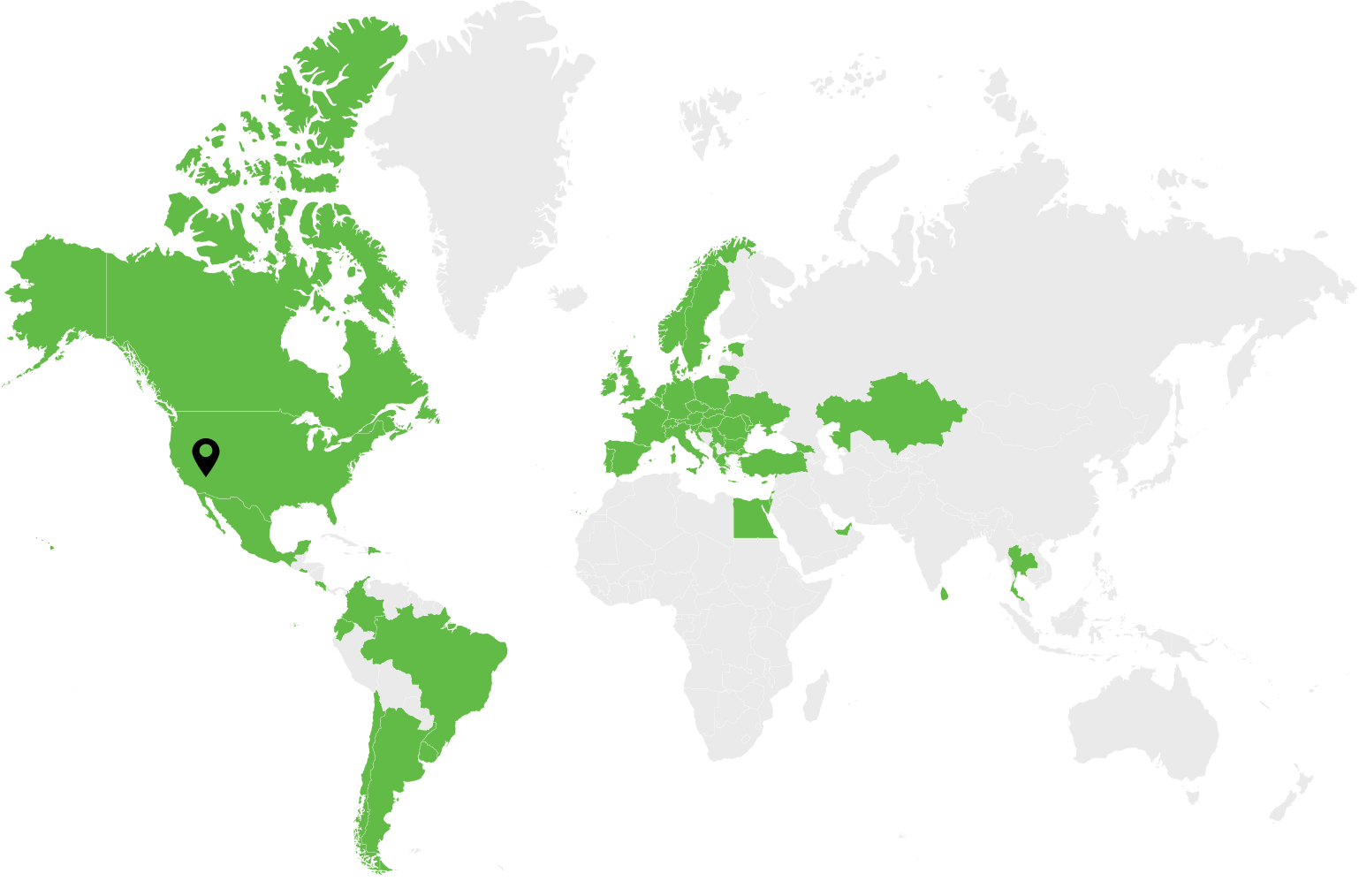POS systems are used in restaurants, hotels, shops, spas, clinics, tattoo parlors – you name it. If you can pay for a service in a brick-and-mortar establishment, it’s enabled by a Point-of-Sale solution. But it’s when a POS is integrated with the online ordering software that a business gains the superpower of cross-channel sales, gets a chance at overnight expansion, and gives its customers another dozen solid reasons for loyalty.
In 2023, there’s no such question as “To integrate POS and online ordering or not?”
Why?
- 111 million users of food delivery services amounted to $26 billion in 2022 in the US alone.
- 60% of US customers will order takeout once a week, and 31% will use third-party delivery services as often as twice a week.
- The old adage about three success factors for a restaurant being 1. Location, 2. Location, 3. Location is no longer valid. Now it is: 1. Digital transformation, 2. Taste-to-price ratio, 3. Location.
For retail, keeping all systems connected and exchanging data is just as critical as it is in hospitality, as online is gaining demand, due in part to the pandemic.
How exactly does the online ordering functionality integration with POS help businesses?
Benefits of Online Ordering POS Integrations
The advantages penetrate every facet of the business: from marketing to ordering, packaging, and delivery impacting all stakeholders—team, partners, and clients. These are some of the major gains.
Speed of Service
Online ordering system with Point of Sale Integration speeds up all processes, making the ordering process itself a quick experience, passing the order to the kitchen right away, and enabling prompt dispatch of the food.
Naturally, speed is critical for two reasons in the restaurant industry:
- The food needs to be hot upon delivery even if it’s a few miles away from the spot it was cooked at.
- The hungry customer is often also a hangry customer, and the speed of service plays a major role in converting them into loyal repeat clients.
Online Ordering System Integration with a Mobile App
Currently, 59% of global traffic is now mobile, according to Statista. Users love their smartphones and an intuitive mobile app is a great way to tie your customers to your brand. For sushi and pizza places, proximity is as important as pricing and quality. If all three hit the target, users will gladly download an app to get reward points, personalized offers, and a quick ordering process.
POS integration with an online ordering platform and a mobile app yield the best results, allowing data to reach key agents of the food cooking and delivery process in a timely fashion.
User-Friendly Payment Options
If a user only has Apple Pay, and you don’t have this payment method on your food ordering application, your business may be losing out on a segment of valuable customers. Offering as many payment options and the ability to tip online is a convenience customers expect, as the default setting.
PCI compliance is critical. So, when choosing third-party vendors for either POS or online ordering systems, make sure they comply with this strict requirement framework.

Drive Customer Loyalty
Online ordering integration with a loyalty management program is another way to further better your connected restaurant experience.
According to PYMNTS, in 2020, loyalty program users spent on average $200 in QSR and $232 in sit-down restaurants, when non-users spent only $104 and $112, respectively. Twice as much.
Loyalty may be costly, but it certainly pays bills in the restaurant industry.
When restaurants carefully integrate loyalty systems, POS, and online ordering, their customers benefit from a seamless ordering experience that is personalized, earns points, and translates into favorite freebies. Throwing in a few macaroons or a bunch of home-made grissini may not cost much to a business, but it strikes the right chord with customers, turning them into brand advocates.
Reduce Human Errors & Their Cost
Manual processes are always prone to human errors. High turnover in the hospitality and retail industries doesn’t quite help businesses reduce these human-factor-related expenses—as new hires make more mistakes than experienced associates.
Not only is technology designed to lead a person from step A to step Z of a process, but also has all these notifications and warnings to raise awareness of potential outcomes if a certain button is pressed.
Save Time on Updating
When systems talk to each other, businesses can update inventory in the click of a button, or the system will refresh itself when any change in inventory occurs automatically.
Updating all the SKUs in correct sizes and colors across multiple channels and marketplaces can be a full-time job, depending on your inventory.
Online ordering systems allow you to sync any purchased items, distract them from total inventory or vice versa, and upload new items prices, description, sizes, and images across many channels in bulk.
Put Yourself on a Map with Thousands of Hungry Users
This is more of a burning question for the restaurant industry, as the average check is only small, so every adult person in the radius of 3–5 miles is your potential customer three times a day.
Talking about benefits of online ordering, if you don’t have it integrated yet, but prefer people to eat-in only, you are losing out on a vast addressable market that orders their food online.
If you have your delivery, online ordering, and POS integrated, you have opened yourself up to the endless opportunities of the ghost kitchen concept.
Drive Team Satisfaction
Mundane work is hardly anyone’s favorite, so when you allow systems to sync automatically and free up your team from filling out endless reports, you end up with a happier team.
The less stressed your team is—the better point of contact they are for your customers, driving your overall online reputation, increasing the average check, and having many other positive outcomes from a ripple effect.
Online Ordering Software with POS Integration: Ecosystem & Features
A connected restaurant and connected kitchen concept suggests that software and even hardware are connected into one network of data that is being exchanged between parties, systematized, and reported.
POS Integrations Ecosystem & Elements
When talking about the possibility of online ordering with integration these systems are the major elements of such a network:
- POS
- Mobile app and ecommerce website
- Delivery services [third party and inhouse]
- KDS [kitchen display system, including hardware peripherals like printers]
- Inventory management software [specifically for retail]
In an even more connected environment, you can also expect your loyalty and marketing software as well as your CRM to be integrated with these solutions.
Fundamental Features of the Online Ordering POS System
These key functionalities of an online ordering POS allow for a smooth and timely exchange of data between multiple systems:
- Settings
Many settings must be ticked and defined in your online order software to enable your online channels—be it a mobile app or a third-party channel—to sell exactly what you have, when you have it, and at the right price.
You will want to ensure that systems have synched opening time, cooking time allowance, delivery settings, payment choices, tip management possibilities, they align with local regulations, and so on. The video below, by Revel systems, is a great example of some of the data points that need to be predefined to enable the seamless ecommerce operations.
- Order Management
A properly integrated POS system will receive an order when it’s been punched in your mobile app or an online storefront by a customer. You will receive a name for the items ordered, their quantity, price, comments, and delivery instructions. A user is able to confirm the order, print it for the kitchen to process, pass it to delivery, and refund it.
- Order Printing
Kitchen display systems and printers are part of the hardware peripherals used on the kitchen side of the restaurant business, which enable order processing along for kitchen service.
- Reporting
Dashboard and reporting functions allow you to monitor the sales and spot any bottlenecks in the process, as well as better understand your customer and improve service and the offering in the longer run.
In retail ecommerce, reporting is looked at daily. As notoriously fast fashion becomes instantaneous fashion, companies learn to order small batches, test demand, and order more as they go. This helps keep the customer loyalty and the innovation leader status.
Zara, for example, prefers to manufacture in small batches with a short lead time. The company can bring new pieces in as little time as five weeks. Sales reports that enter the accounting and inventory solutions that are integrated with online ordering and POS provide the much-needed data to decide what’s in demand.
- Refund Management
Refunds are an indispensable part of both industries—ecommerce and hospitality—which are heavy on POS tool usage.
Customers buy more willingly when they know they will be refunded easily if a piece of clothing doesn’t fit: 79% of buyers expect to see a free return shipping, and 92% will return to buy again if the refund procedure went smoothly.
That said, a good two-way sync of all systems taking part in refund processing is critical. You need to make sure the POS, online ordering software, mobile app, and delivery systems are all talking to each other and processing that refund seamlessly and according to the law.
- Payment and Tips Processing
Customers expect to pay contactless online in the method convenient to them with the least commission and highest cashback. So, having a wide range of payment gateways and payment methods is critical: from PayPal to Apple Pay, and major credit cards.
In a restaurant environment, your team will appreciate it if you have a tipping management module developed as part of the payment functionality so that guests can thank their servers.
- Delivery Management
Delivery management software integration with POS and online ordering enables a smooth overall customer experience.
Many local businesses will offer courier service with apps that can be connected with your inhouse restaurant management software via APIs or webhooks.
- Third Party Online Ordering Platforms Integration to POS
If you have low local brand awareness, joining a food ordering app service is a good idea for a restaurant.
Doordash and UberEats are just two of the major suppliers globally and US-wide. You will need to register with some major suppliers before you can integrate them with your POS and online ordering tool of choice.
Top POS Systems with Online Ordering for Retail
Some of the vendor-made POS systems for the retail industry have an online ordering module among other functionalities.
These are popular Point-of-Sale systems among e-tailers worldwide:

Restaurant POS with Online Ordering: Leader League
While some POS developers are jacks-of-all-trades, catering to hospitality, retail, beauty, and healthcare industries, some will home in on one segment but develop really in-depth products.
These are some of the POS systems with online ordering capability that have harnessed the restaurant business:
- Revel
- Toast
- TouchBistro
- Epos Now
- Square
Case in Focus: Heartland POS Online Ordering
Heartland POS system for restaurants can be extended with an integrated Online ordering solution that features these capabilities:
- Design customization
- Business hours settings
- Order management [min/max order total]
- eGift integration
- ASAP order management
- Payment method management
- Tips management
- Confirmation email settings
- Delivery & Carryout settings
Dev.Pro’s team of software developers is proud to have contributed to some of Heartland’s projects; you can familiarize yourself with one of the case studies.
System Integration with POS Development Experts
If you need to integrate your POS with online ordering software from scratch, modernize it, or enable a third-party integration, speak to our experts.
With an extensive POS software development projects portfolio, we’ll be able to guide you through the noise of ever changing technological evolution to the architecture and solution that’s both up-to-the-minute and reliable.


